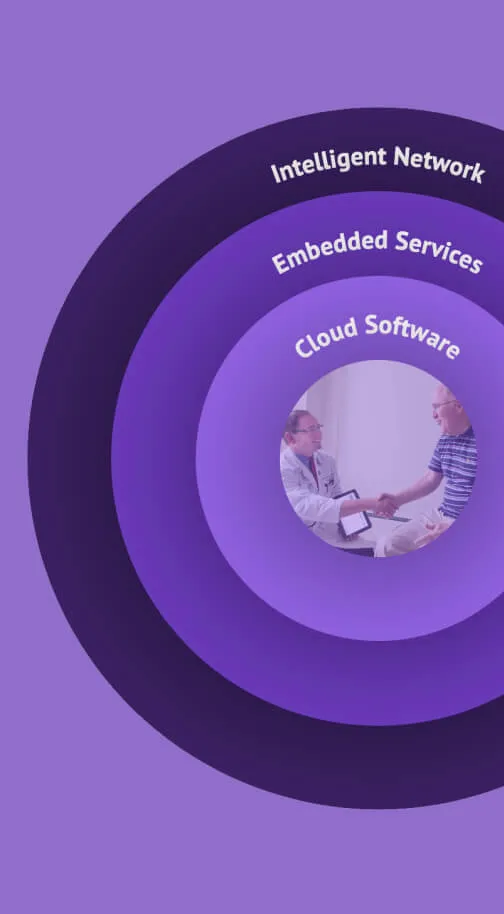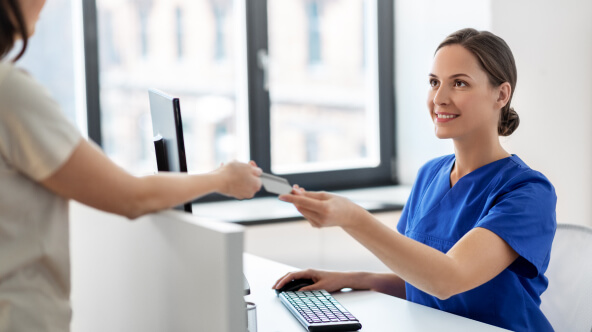For a practice to maximize patient payments — and contribute to an overall increase in collections — it’s recommended that payments from self-pay patients be managed as part of the practice’s everyday workflow.
Some considerations when working with self-pay patients:
- Help practice staff understand the importance of collecting patient payments.
- Provide front-desk staff with scripts to use when asking self-pay patients for co-pays, deductibles, and previous balances.
- Identify and appoint the "aces" of patient payments. Asking for money is a talent, and the self-pay collections pros on you staff should be highly visible in the practice workflow and easily accessible by patients. Collecting payments from self-pay patienta talent that should be considered when recruiting new staff or reorganizing your patient workflow —and those who excel should be recognized and rewarded.
- Explore incentives or recognition opportunities for staff self-pay achievements.
An important facet of self-pay collections is to communicate clearly with patients about their financial responsibilities. Establish practice expectations for patient payments, and work closely with self-pay patients to resolve outstanding balance issues.
Saying nothing can create ambiguity and dread for everyone; instead, commit to firm guidelines, consistent follow-through, and clear communication about handling self-pay patients. When patients know exactly what the practice expects, they are more likely to plan ahead and be ready to pay for their medical services when they arrive for their appointment.
Another essential aspect of a self-pay strategy is integrating the process of patient payments into your daily workflow. Here are some workflow best practices that address ways to manage self-pay patients:
During pre-visit scheduling:
- Create a policy for patient payments
- Create materials for patients to clearly communicate the policy for patient payments
- Consider policies for special circumstance
- Make reminder calls to confirm patient insurance and remind patients that co-pays and previous balances are due at the time of service
During check-in:
- Confirm patient demographics
- Collect patient payments such as co-pays and deductibles
- Scan insurance cards
- Collect completed HIPAA forms
During the exam:
- Remind patients to speak with the front desk staff about payments
During check-out:
- Have staff refer to pre-written scripts to request co-pays, deductibles, and previous balances
- Ask self-pay patients if they would like a credit card securely stored to pay future balances
- Establish electronic payment plan if a patient cannot pay immediately
During follow-up:
Rapid follow-up with self-pay patients is essential since the likelihood of collecting unpaid balances decreases over time. Practices should allocate staff time for handling follow-up: Consider making two reminder calls and sending two e-mails during every statement cycle. Then, after the third statement, delinquent accounts are usually eligible for collection by an agency, to which your practice should send accounts on a regular basis.
After one year, it typically costs a practice more to collect payments from self-pay patients than what is actually owed.
Considering the challenges that patient responsibility presents, working with the right practice management and billing vendor —especially one that can offer the conveniences of an integrated patient portal and communications service — can ease your administrative burden, improve self-pay collections, and reduce days in accounts receivable.
A comprehensive suite of services from a vendor can include:
- A patient portal to communicate the practice’s self-pay policy, calculate anticipated co-pay amounts, accept payments, and provide summarized EOBs and statements of patient payments
- Rapid insurance eligibility check before each appointment
- Scripts to help staff request payments from self-pay patients
- Access to real-time adjudication for accurate patient payments
- Payment processing via credit card, HSA/FSA cards and checks
- Secure storage of credit card information to pay future bills
- Live operator services to accept after-hours bill payment
- Automatic credit card payment schedules for self-pay patients
- Automated follow-up calls and e-mails to patients with outstanding balances, including mailing printed statements if needed












